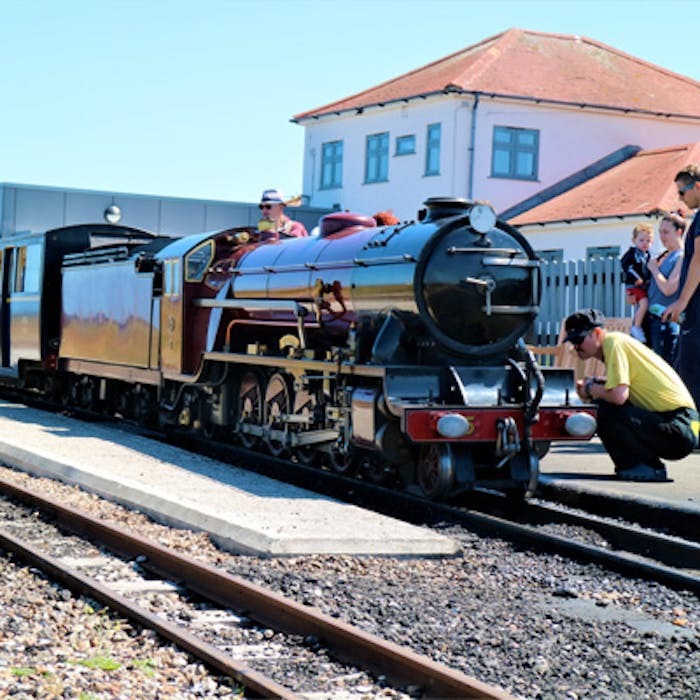
Romney, Hythe & Dymchurch Railway - Kent's miniature train set
Since 1927 the Romney, Hythe & Dymchurch Railway (RH&DR) has been an integral part of the landscape of the Romney Marsh in Kent, offering a unique novelty miniature passenger carrying service along 13-and-a-half miles of the coast.
Known as 'Kent's Mainline in Miniature', the one-third full-size steam and diesel locomotives and carriages power their way along from the Cinque Port town of Hythe to Dungeness at the remote end of the national Nature reserve there.
The RH&DR was the result of a collaboration between Captain J.E.P Howey (a racing driver, landowner and miniature railway aficionado) and Count Louis Zborowski (eminent racing driver of his day and owner of the Chitty Chitty Bang Bang Mercedes). The pair were keen to build a fully working railway using the 15" gauge. They originally attempted to purchase the Ravenglass and Eskdale Railway in the Lake District, but to no avail.
The count then ordered two Pacific locomotives (Green Goddess and Northern Chief), to be designed by the leading model engineer of his day, Henry Greenly, which were built in Colchester by Davey, Paxman and Co. But before they were delivered the Count was killed while racing in the 1924 Italian Grand Prix. Howey was left with two locomotives and the task of finding somewhere to run them. He commissioned Greenly to help him, and it was the latter who came up with the Romney Marsh.
The official opening took place on 16th July 1927, though the line then only covered, in double track, the eight miles between Hythe and New Romney. But Howey had his eye on extending the line, and in 1928, double tracks carried the trains to Dungeness via Greatstone.
The locomotive fleet was subsequently extended to nine mainline express engines, with a fleet of luxurious coaches. During World War Two the line was requisitioned by the War Department - creating the only miniature armoured train in the world. The system was used extensively during the building of PLUTO (Pipe Line Under The Ocean), which fuelled the Allied invasion force.
After the War, the line reopened in 1946, with Laurel and Hardy cutting the ribbon. However, New Romney to Dungeness was now single-line only, as the raw materials to re-build were scarce and the cost was high. The fifties and early sixties saw a boom in domestic tourism, and the Kent coast and the RH&DR benefited greatly, but the arrival of cheap package holidays to sunnier climes soon saw the passenger numbers fall.
Owner Howey died in September 1963. As a succession of new owners took on the concern, a lack of investment became apparent. Bridges were in poor condition, rolling stock was ageing and uncomfortable, locomotives were costly to maintain.
A new consortium, headed by construction millionaire Sir William McAlpine, saved the day in 1973. Much investment has taken place over the intervening years to ensure the railway maintains its delightful and unique service.
Further reading
Links to external websites are not maintained by Bite Sized Britain. They are provided to give users access to additional information. Bite Sized Britain is not responsible for the content of these external websites.
